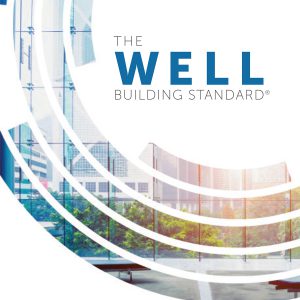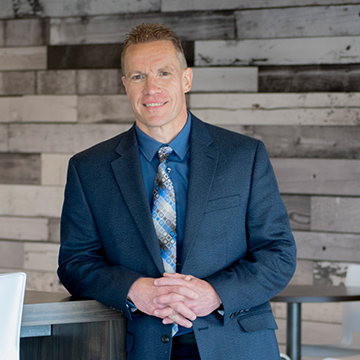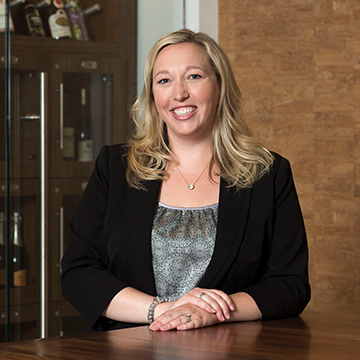 Through the affects of the global pandemic and health crisis put on senior living owners and operators this year, there has been an increase in awareness and an even greater emphasis of the health and well-being of residents and caretakers. One system that has become more well-known and widely accepted is the WELL Building Standard (WELL). Created in 2014, the WELL Building Standard initially focused on the corporate sector but has since evolved into other markets such as multi-family, hospitality and now senior living. Senior living providers are starting to see WELL as a way to help residents and staff maintain a health lifestyle and keep a community safer and cleaner overall. It also gives prospective residents and their families more reassurance when selecting a new community. One operator mentioned it as, “Good Housekeeping’s Seal of Approval” for creating a healthy environment for current and new residents.
Through the affects of the global pandemic and health crisis put on senior living owners and operators this year, there has been an increase in awareness and an even greater emphasis of the health and well-being of residents and caretakers. One system that has become more well-known and widely accepted is the WELL Building Standard (WELL). Created in 2014, the WELL Building Standard initially focused on the corporate sector but has since evolved into other markets such as multi-family, hospitality and now senior living. Senior living providers are starting to see WELL as a way to help residents and staff maintain a health lifestyle and keep a community safer and cleaner overall. It also gives prospective residents and their families more reassurance when selecting a new community. One operator mentioned it as, “Good Housekeeping’s Seal of Approval” for creating a healthy environment for current and new residents.
WELL is a performance-based system combining best practices in design and construction with evidence-based scientific research including measuring, certifying, and monitoring features of the building that impact human health and wellbeing. WELL touches on 10 key areas identified and reinforced by significant scientific research known to have an impact on human health, and when we are intentional about these areas, these impacts can work to enhance and improve a resident’s health and wellness, not compromise it.
 Take, for example, lighting. By making sure the lighting in the community supports a resident’s natural circadian rhythms, a resident’s inner clock is reinforced in ways that can improve cognition, sleep and overall well-being. A number of seniors suffer from dementia, and the warm lighting at night can help minimize the anxieties that come at sundown. Similarly, bright light during the day is energizing and certainly helps those with eyesight issues compromised by the aging process.
Take, for example, lighting. By making sure the lighting in the community supports a resident’s natural circadian rhythms, a resident’s inner clock is reinforced in ways that can improve cognition, sleep and overall well-being. A number of seniors suffer from dementia, and the warm lighting at night can help minimize the anxieties that come at sundown. Similarly, bright light during the day is energizing and certainly helps those with eyesight issues compromised by the aging process.
 Another area is thermal comfort. We know humans are frequently more prone to circulation issues as they age, causing them to feel cold. But just turning up the heat isn’t enough; it’s also balancing the moisture in the air to create an optimal thermal environment, something else that WELL accounts for.
Another area is thermal comfort. We know humans are frequently more prone to circulation issues as they age, causing them to feel cold. But just turning up the heat isn’t enough; it’s also balancing the moisture in the air to create an optimal thermal environment, something else that WELL accounts for.
 Another area is materials. People don’t need to be in places where severe off-gassing of carpet, furniture or paint is occurring, and senior facilities refresh rooms far more frequently than other types of housing. WELL helps facility managers make better purchasing choices so that the respiratory effects of these silent toxins are mitigated.
Another area is materials. People don’t need to be in places where severe off-gassing of carpet, furniture or paint is occurring, and senior facilities refresh rooms far more frequently than other types of housing. WELL helps facility managers make better purchasing choices so that the respiratory effects of these silent toxins are mitigated.
These are just three of the 10 areas – the others are nutrition, air, water, nourishment, movement, mind, sound and community, all of which are incredibly important for seniors. And every one of these presents a cost-effective opportunity to improve a resident’s health within the built environment.



In September 2020, WELL launched WELL v2 – a new more responsive and resilient version of the Well Building Standard. Its purpose is important more than ever. Meyer’s three WELL Accredited Professionals and Meyer WELL Team Members – Phil Burkett, Shannon Remaley and Mark Kuberski – are actively engaged with many of our corporate and senior living clients to seamlessly integrate the WELL Building Standard or the third-party verified, WELL Health-Safety Rating, into their designs to deliver buildings that are safe and healthy environments for all.
Let Meyer guide you through the enrollment and certification process. Learn more about the WELL Health-Safety Rating here and WELL v2 here and contact one of our three WELL Team Members at Meyer.